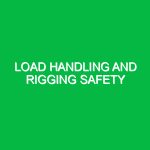Introduction
Protection against falling objects in construction is a vital part of health, safety, and environment (HSE) practices. Imagine working on a building site where heavy tools and materials are constantly being lifted and moved around. It’s crucial to ensure that everything stays in place so that no one gets hurt. Falling objects can lead to serious injuries or even fatalities, making it essential for construction workers to understand the risks and how to protect themselves. This article will explore the hazards, safety precautions, regulations, and best practices associated with protecting against falling objects in the construction industry.
Hazards
In construction, various hazards can lead to falling objects. Understanding these hazards is the first step toward effective protection.
1. Tools and Equipment
Tools like hammers, wrenches, and drills can easily fall from scaffolding or ladders if not secured properly. For instance, if a worker is using a tool on a high platform and drops it, it could strike someone below. This type of incident is common and often results in severe injuries.
2. Materials
Construction sites are filled with materials like bricks, steel beams, and concrete blocks. If these materials are not stacked securely or are moved without care, they can fall. For example, a stack of bricks that isn’t properly secured can topple over, posing a risk to anyone nearby.
3. Weather Conditions
Windy or rainy weather can increase the risk of falling objects. For instance, if a strong gust of wind blows through a construction site, it could knock loose tools or materials off scaffolding. Rain can also make surfaces slippery, increasing the chance of accidents occurring.
4. Inadequate Safety Measures
Sometimes, falling objects occur due to a lack of proper safety measures. For example, if a construction site doesn’t have safety nets or barriers, there is a higher risk of objects falling and injuring workers. Every construction site should have adequate safety measures in place to prevent such incidents.
Safety Precautions
Now that we understand the hazards, let’s discuss safety precautions that can help prevent falling objects on construction sites.
1. Use Safety Gear
All workers should wear protective gear, such as hard hats, to shield themselves from falling debris. Hard hats are designed to absorb impact, reducing the risk of head injuries if something falls from above.
2. Secure Tools and Materials
Tools should be secured when not in use. Many workers use tool lanyards that attach to their belts, preventing tools from falling. Additionally, materials should be stacked properly and secured to prevent them from toppling over. Always check that everything is stable before moving or using any equipment.
3. Install Safety Nets and Toe Boards
Safety nets can catch falling objects before they hit the ground, while toe boards can prevent small items from falling off ledges. Installing these safety features is crucial for protecting workers below.
4. Maintain a Clean Work Area
A cluttered work area increases the risk of falling objects. Workers should regularly clean up tools and materials, ensuring everything is stored in designated places. This not only minimizes risk but also enhances productivity on site.
5. Conduct Regular Safety Training
Regular safety training helps workers stay aware of the hazards and the importance of safety measures. Training sessions should cover how to properly secure tools and materials and how to respond in case of an emergency.
Regulations and Standards
In many countries, there are laws and regulations that govern safety measures in construction. Understanding these regulations is essential for ensuring a safe working environment.
1. Occupational Safety and Health Administration (OSHA)
In the United States, OSHA sets and enforces standards to ensure safe working conditions. OSHA has specific regulations concerning the protection of workers from falling objects. Employers must provide necessary safety equipment and training to their employees. Failure to comply can result in penalties and fines.
2. National Institute for Occupational Safety and Health (NIOSH)
NIOSH conducts research and makes recommendations for preventing workplace injuries, including those caused by falling objects. Their guidelines help organizations implement effective safety measures to protect workers.
3. Local Regulations
Many regions have local regulations that complement national laws. It’s crucial for construction companies to be aware of these local laws as they can vary significantly from one place to another. Compliance with these regulations ensures that the construction site is following best practices for safety.
4. Safety Standards
Various safety standards, such as those from the American National Standards Institute (ANSI) and the International Organization for Standardization (ISO), provide guidelines for ensuring safety on construction sites. Adhering to these standards helps create a safer working environment for everyone involved.
Conclusion
Protecting against falling objects in construction is a critical aspect of health, safety, and environment (HSE) practices. By understanding the hazards, implementing safety precautions, and adhering to regulations, construction workers can significantly reduce the risk of accidents. It’s essential for everyone on the construction site to be aware of these issues and work together to maintain a safe environment. Remember, safety is not just a priority; it’s a responsibility that everyone shares. Together, we can create safer construction sites and protect the health and well-being of all workers.


